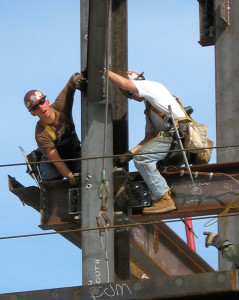Unequivocal waiver of a contract term: what does it look like?
In a recent summary judgment motion, the main topic at issue was whether the famed Mike M. Johnson case applied (Mike M. Johnson v. County of Spokane, 150 Wn.2d 375, 78 P.3d 161 (2003)). As many will recall, Mike M. Johnson (“MMJ”) states that contract provisions are enforceable unless waived by the provision’s benefit ting party. This waiver can be implied through conduct or actions, however, if it is so implied, the conduct/action must be unequivocal for waiver to be valid. MMJ dealt specifically with a contract provision regarding the procedure by which a contractor could receive compensation for changes in the contract (or “change orders”).
 The contract owner in MMJ at almost every turn notified (often in writing) the contractor that if it wanted additional consideration for changes in the contract, it must satisfy the requirements for change orders and turn in specific documentation and information to the owner. MMJ failed to do so. The court held that even though the contract owner had actual knowledge of the changed circumstances, this wasn’t enough. It would have to do more to waive other than simply having actual notice of the changes.
The contract owner in MMJ at almost every turn notified (often in writing) the contractor that if it wanted additional consideration for changes in the contract, it must satisfy the requirements for change orders and turn in specific documentation and information to the owner. MMJ failed to do so. The court held that even though the contract owner had actual knowledge of the changed circumstances, this wasn’t enough. It would have to do more to waive other than simply having actual notice of the changes.
So, the big question remains: if MMJ wasn’t waiver, what does waiver look like? I believe that MMJ and another case called American Safety Cas. Ins. Co. v. City of Olympia, 133 Wn.App. 649, 137 P.3d 865 (2006) give us a hint:
In MMJ, the court analyzed an assertion by the plaintiff which said that because the county had actual knowledge of the changed circumstances, that it therefore couldn’t deny compensation for mere failure to follow the details of the contract. The court disagreed:
 “MMJ argued to the Court of Appeals, and maintains before this court, that when an owner has actual notice of a contractor’s protest or claim, that notice, in and of itself, excuses the contractor from complying with mandatory contractual protest and claim procedures. MMJ contends that the decision of Bignold v. King County, 65 Wn.2d 817, 822, 399 P.2d 611 (1965) establishes the ‘actual notice’ exception . . . [c]ontrary to MMJ’s contention, the Court of Appeals in Bignold did not hold that the owner’s actual notice of the changed condition in and of itself excused the contractor from complying with the contractual notice provisions. Rather it was the owner’s knowledge of the changed conditions coupled with the subsequent direction to proceed with the extra work that evidenced its intent to waive enforcement of the written notice requirements under the contract.” Id. at 388-89
“MMJ argued to the Court of Appeals, and maintains before this court, that when an owner has actual notice of a contractor’s protest or claim, that notice, in and of itself, excuses the contractor from complying with mandatory contractual protest and claim procedures. MMJ contends that the decision of Bignold v. King County, 65 Wn.2d 817, 822, 399 P.2d 611 (1965) establishes the ‘actual notice’ exception . . . [c]ontrary to MMJ’s contention, the Court of Appeals in Bignold did not hold that the owner’s actual notice of the changed condition in and of itself excused the contractor from complying with the contractual notice provisions. Rather it was the owner’s knowledge of the changed conditions coupled with the subsequent direction to proceed with the extra work that evidenced its intent to waive enforcement of the written notice requirements under the contract.” Id. at 388-89
From that analysis, the court has clued us into what may look like an unequivocal waiver: actual notice, coupled with directions to proceed. This resembles an estoppel argument in a lot of ways. A contract owner may not be protected if he/she knows about change orders, then directs the contractor to do the changed work. The court seemed to want to avoid the idea of using the contract as a payment shield after an owner draws the contractor into doing change orders.
This idea is echoed in the American Safety case. There, the court further clarified what unequivocal waiver may look like: “[w]e stress that the discussions between the City and American Safety took place after the work was completed, and thus the situation was not one where the City was directing American Safety to perform its obligations under the contract while the parties negotiated the contractual dispute. Had the City directed American Safety to focus on performing work rather than worrying about assembling documentation to comply with contractual provisions, then such situation could arguably be construed as implied waiver. . .” Id. at 772.
Unequivocal waiver of a contract provision would appear to be an instance where a benefited party knows of changed circumstances and directs the other party to more forward, OR, the party is aware of the changed circumstances, then waives the contract procedures by insisting that the work be done and that the contractual formalities be put off or ignored.


 Wendy Koch, a fellow associate at Dickson Steinacker, provided the following authority regarding just that issue:
Wendy Koch, a fellow associate at Dickson Steinacker, provided the following authority regarding just that issue: